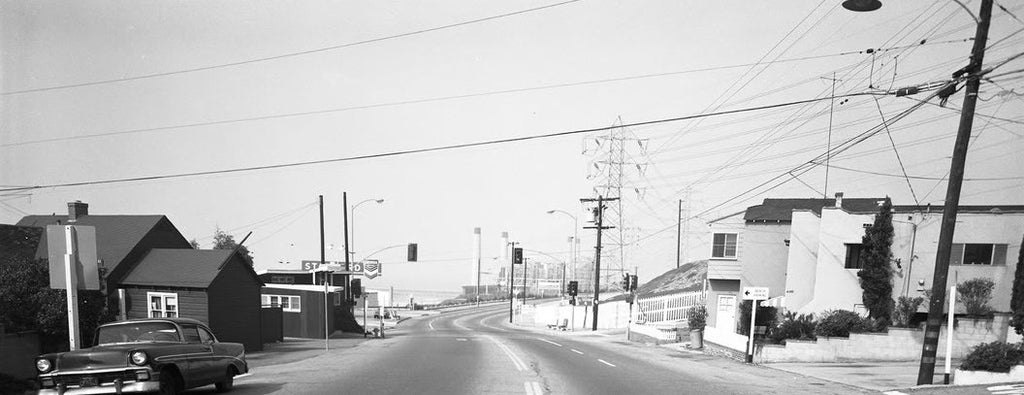EL PORTO & OSOPORTO
Lots of people know El Porto Beach, but El Porto is a small neighborhood in Manhattan Beach, CA that used to be a town of its own. Wedged between the Pacific and an oil refinery; and in the shadow of smokestacks and planes leaving LAX Airport, the 10 block neighborhood still retains a distinct personality.
El Porto, California was established in 1911. As an unincorporated town, it was basically a municipal island until 1980 when it was was annexed into neighboring Manhattan Beach. It's always had a more eclectic edge because of that - not just a home to families over the years, but also bikers, beatniks, hippies, artists, authors, and always: surfers. El Porto's a bit of a stepchild. We like it that way.

Originally El Porto had 83 business lots and 225 residential lots. It may be the only community in California that was almost totally developed with two residential units filling each of its tiny lots, with no room for yards. That closeness creates a lot of community by necessity here. The Pacific Electric Red Cars ran along the beach on what is now the bike path until 1940. As a county island, El Porto was a hot spot in the 50's to 70's, attracting everything from hippies and artists to beatniks, surfers, and stewardesses. Back then, Pancho's was known for its Chinese food. Across the street, Cisco's (where Sharkeez is now) was owned by the Smothers Brothers and Clint Eastwood. Ike & Tina Turner were known to play there. Today's Fishbar was the Turf & Sand, then the Frigate and the Pelican. Other hot spots were the Bluebook, Players, Orville & Wilburs, the Hatchcover, and Dietrichs. The Beacon, on the Strand at Rosecrans, served tacos to Bogart & Bacall. A beatnik sculptor named Mike Gildea used to carve and sell giant tiki statues from his home where Players Liquor is now. El Porto is thought to be the inspiration for Gordita Beach in Thomas Pynchon's "Inherent Vice," as well as locations in many of his other novels. While living here, Pynchon was known to frequent local landmark El Tarasco, which thankfully still survives and is still as great as ever. Go get yourself a burrito. You never know who you'll meet in El Porto.
Check out our Instagram account for views of the neighborhood.

My name's Jon. I started OsoPorto partly as a way to help keep the name of my neighborhood alive and save some of the history of this cool little casual beach pocket neighborhood that was once a town of its own as it slowly disappears into surrounding McMansion homogeneity; but also as a creative outlet just to make whatever inspired me. It's stuff you hopefully think is cool and fun and want to wear or have in your house. Maybe it evokes a feeling of beach life or a broader idealistic California attitude, or maybe a special place of your own.

OsoPorto is a side project for me - for my "real job," I make motion graphic design for television - things like tv show titles or commercials for tv networks. OsoPorto is my outlet to design and create freely (when time permits; I always have more ideas for new stuff than I can possibly get to.)
If you want to know even more, here are a couple articles about OsoPorto:
Bringing El Porto to Life through Design - Easy Reader, December 2015
Inspired by El Porto - The Beach Reporter, December 2014
You can also check out this video from our Kickstarter project in 2014 that helped launch the online store. Be sure to check out the Founders Club page featuring everyone that helped make it happen.
Note that a lot of this info comes from tales by locals and neighbors or bits and pieces gleaned on the web - please take it as such. Also be sure to watch our blog for more pics and bits of El Porto's history. And if you have stories or old photos of El Porto you'd be willing to share, please let me know!























